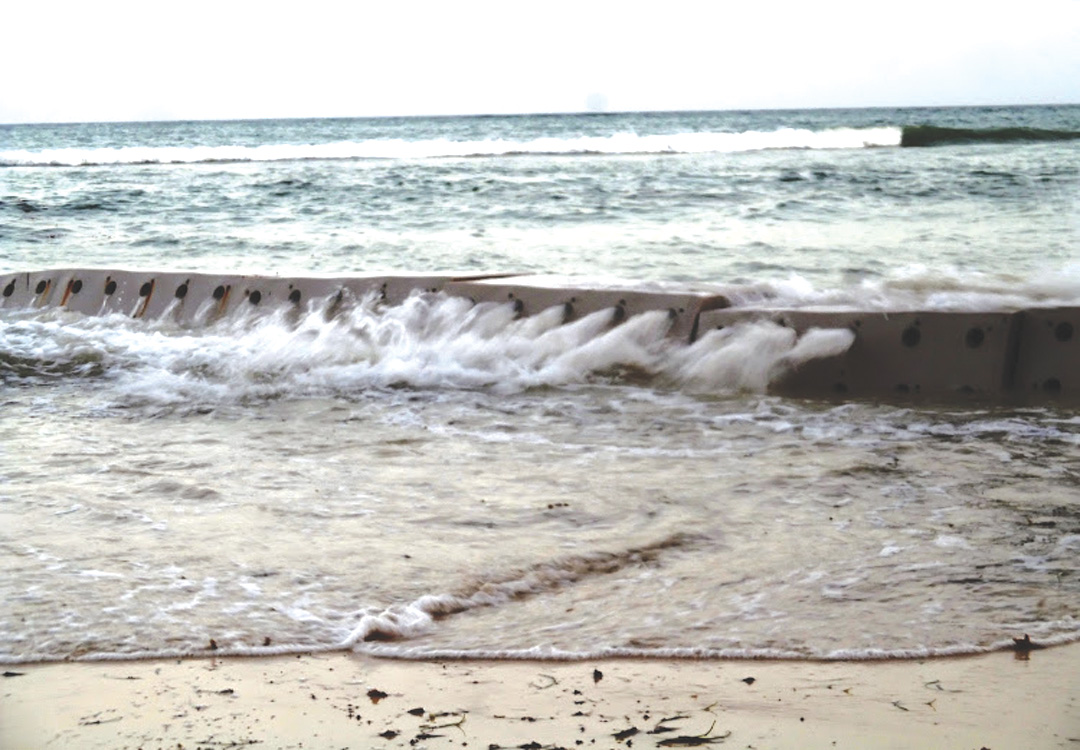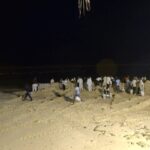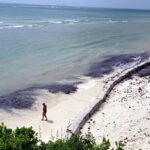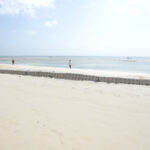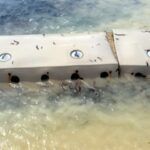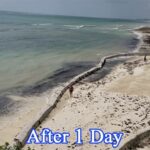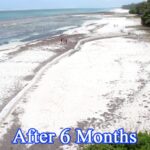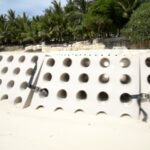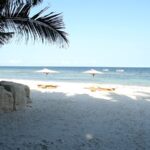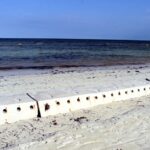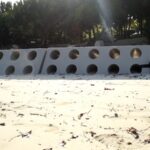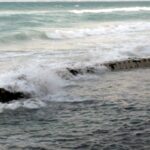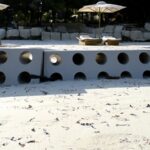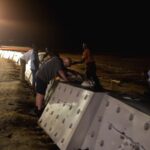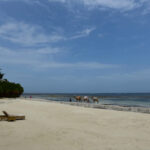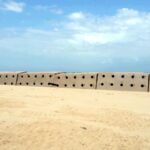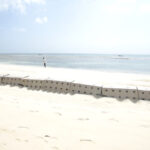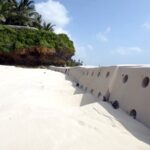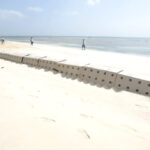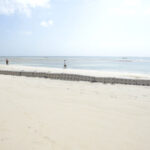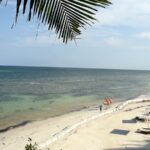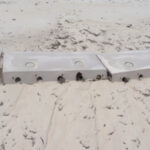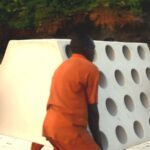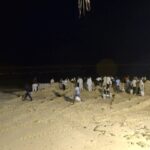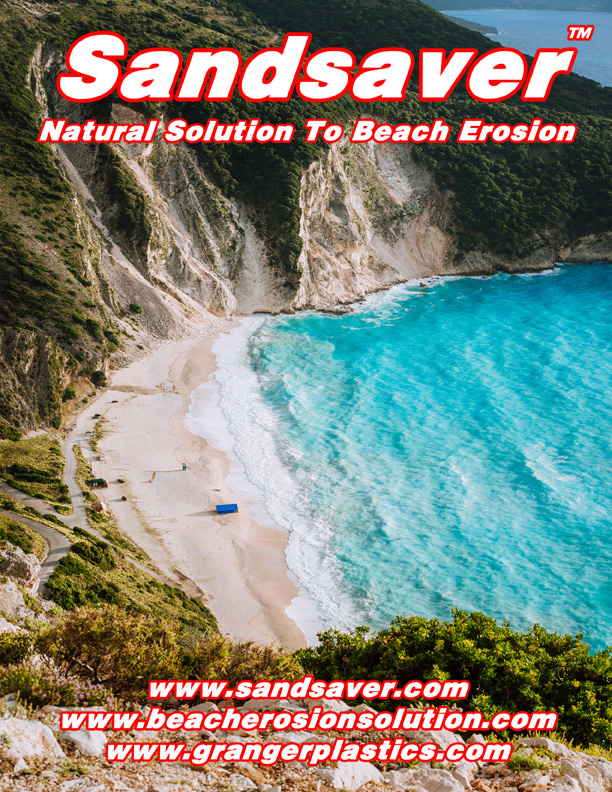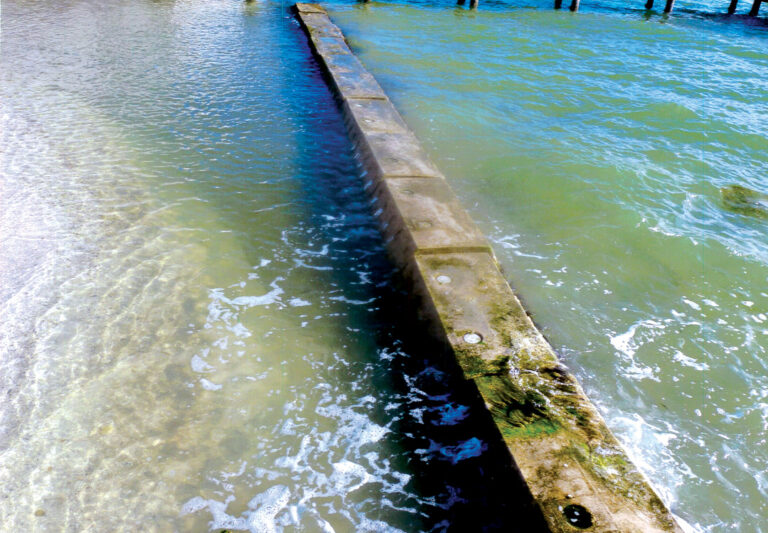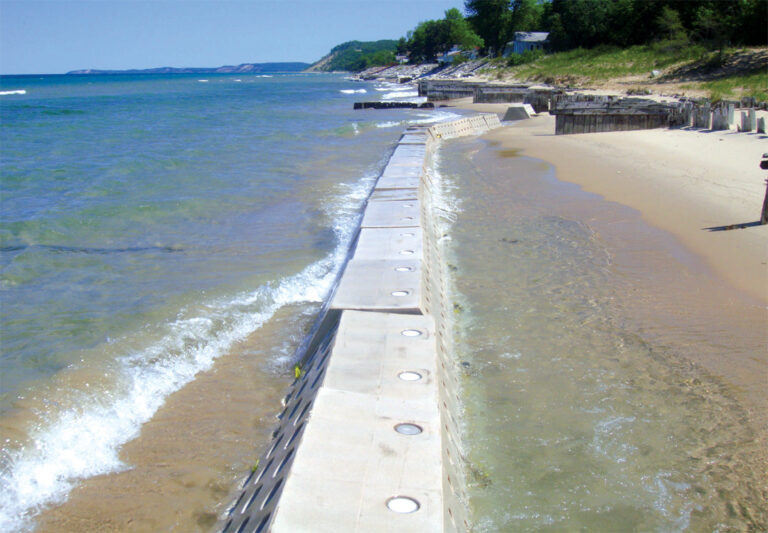One of Africa’s most opulent beach resorts, Swahili Beach Resort has been facing challenges with beach erosion problems for several years. Despite being a regular nominee and two-time recipient of Kenya’s Best Beach award, the resort has had to address the issue of sand erosion on its beach and mitigate guests’ concerns regarding exposed coral and rocks. Despite having tried conventional methods that have been historically employed in the region, the resort ultimately decided to install Sandsaver™ to combat the issue of beach erosion on the Indian Ocean.
Sandsaver Install- Kenya, Indian ocean
The installation of the Sandsaver units on the Indian Ocean shore required manual labor and strategic timing due to the high tide and surf conditions. Just as the last units were placed into place, they were filled with sand and strapped together. The tide is slowly moving back towards the beach, and sunrise is only hours away.
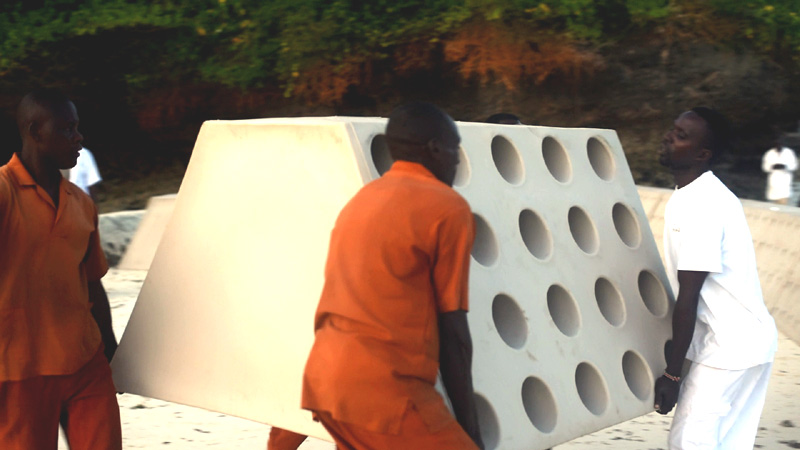
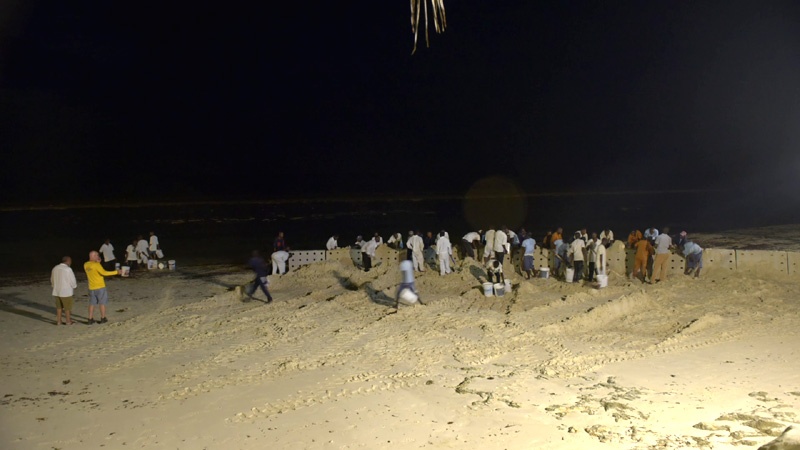
2 Weeks after install- sandsaver indian ocean
The 2 week Sandsaver video update provides a comprehensive overview of the initial two weeks following the installation of the Sansdaver units. Based on estimates at the end of this period, Sandsaver had successfully accumulated approximately 3,500 cubic yards of sand around the Sandsaver modules, while also increasing the width profile of the beach by approximately 75 feet in certain areas. This remarkable achievement is a testament to the effectiveness of natural beach re-nourishment, which has been accomplished in a mere two weeks.
6 weeks after install- sandsaver indian ocean part 2
In the following video update, six weeks has passed since the installation of the Sandsaver™ beach erosion barriers on the Indian Ocean coast. Generous volumes of sand has continued to accumulate on both sides, behind and in front of the Sandsaver™ modules. The majority of the beach erosion barriers are approximately 50% covered, both in front of and behind them. The width profile of the beach has increased by over 75 feet in many areas since the installation of the Sandsaver™ system.
Please watch the video update from the Sandsaver Beach Erosion Solution Swahili Beach Install Part 2 below to recap part 1 and see the estimated accumulation after six weeks.
In the second video update above, it is conservatively estimated that over 20,000 cubic yards of sand had been accumulated around the modules at this point, while increasing the width profile of the beach over 75 feet in many areas across the length of the Sandsaver™ system installation.
6 Months after install- sandsaver indian ocean part 3
Updates on the Indian Ocean Sandsaver installation became virtually impossible as the World was essentially shut down during the Covid-19 pandemic. Obtaining photo and video updates from the other side of the globe proved wildly difficult. Eventually, a normal way of life returned and the mandates and regulations that were in place during the Covid-19 pandemic were slowly lifted.
Large amounts of sand has accumulated surrounding the installation length of modules at this point. Sand accretion on both sides of the beach erosion barriers is noticeable and monumental. The width profile of the beach is continuing to increase as the sand accumulates on the beach, while the beach starts to have a nice gentle slope out to the ocean because of the sand accumulation, continuing to cover the modules and accumulate. It is incredible the amount of sand that has accumulated at the installation location, but in the neighboring properties as well, as they have experienced impressive sand accretion. You can visibly notice the increased sand accumulation in the animated image below.
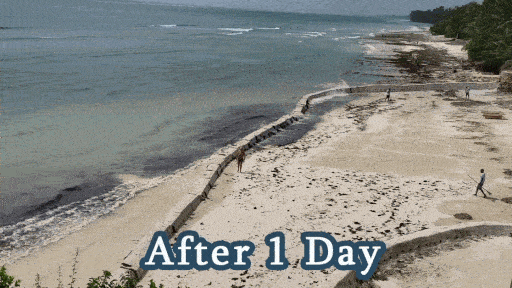
The Sandsaver™ beach erosion solution video series has launched its highly anticipated third portion, which offers an in-depth analysis of the installation process and sand accretion estimates. Part 3 provides a quick summary of the first two videos while highlighting the beach erosion solution’s achievements in the six weeks after installation. Sandsaver’s success in rebuilding the beachfront properties of one of Africa’s most exclusive 5-star resorts in the Indian Ocean is highlighted throughout the video series. The stunning expansion of the beach profile and sand accumulation in the six months since the installation of Sandsaver™ is also showcased in the video. This video features a conservative sand accretion estimate and highlights the efficacy of the Sandsaver™ solution.
To see the Sandsaver™ in action, be sure to view this exciting third part installment of the SandSaver™ installation video series below.
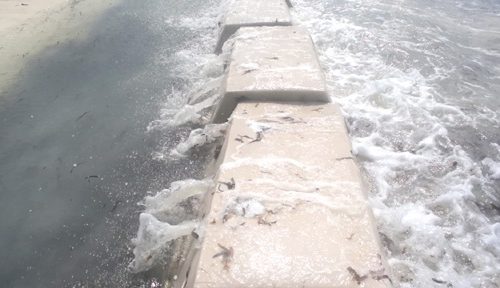
Sandsavers installed in high surf- indian ocean
While Sandsaver™ had previous installations in the Gulf of Mexico and Lake Michigan, the Sandsaver™ had never been installed or utilized in a regular high high surf environment. During the Lake Michigan Sandsaver installation, surf in the Great Lakes at times reached 12-14 feet, sometimes even higher during storm surges. Surf in the Indian Ocean installation regularly exceeds 14 and 15 feet. Increased tide energy and wave activity greatly assists in bringing sufficient amounts of sand content to the Sandsaver™ installations sand accumulation. Extremely conservative estimates and calculations approximate that the Sandsaver™ system had accumulated over 30,000 cubic yards of sand in the first 6 months of installation, thru a natural means of re-nourishment. Properties adjacent to the Sandsaver™ installation experienced immediate gains in sand accumulation, both North and South of the install site. The system provided additional benefits in the daily maintenance of the resort’s coast, as it reduced the seaweed and sargassum that washed upon the shore. By breaking down the wave energy, Sandsaver™ was also beneficial in keeping the seaweed and sargassum localized and not spread all across the beach as was experienced prior to Sandsaver’s installation.
See the Sandsaver™ system installed and exposed to an extreme high surf during high tide in the video below!
Sandsaver Beach Erosion Solution Indian Ocean Photogallery
Click any of the Indian Ocean Sandsaver installation photo gallery images below to open
Sandsaver Information
Click below to download Sandsaver PDF Files
For additional Sandsaver information, please check out the downloads page

